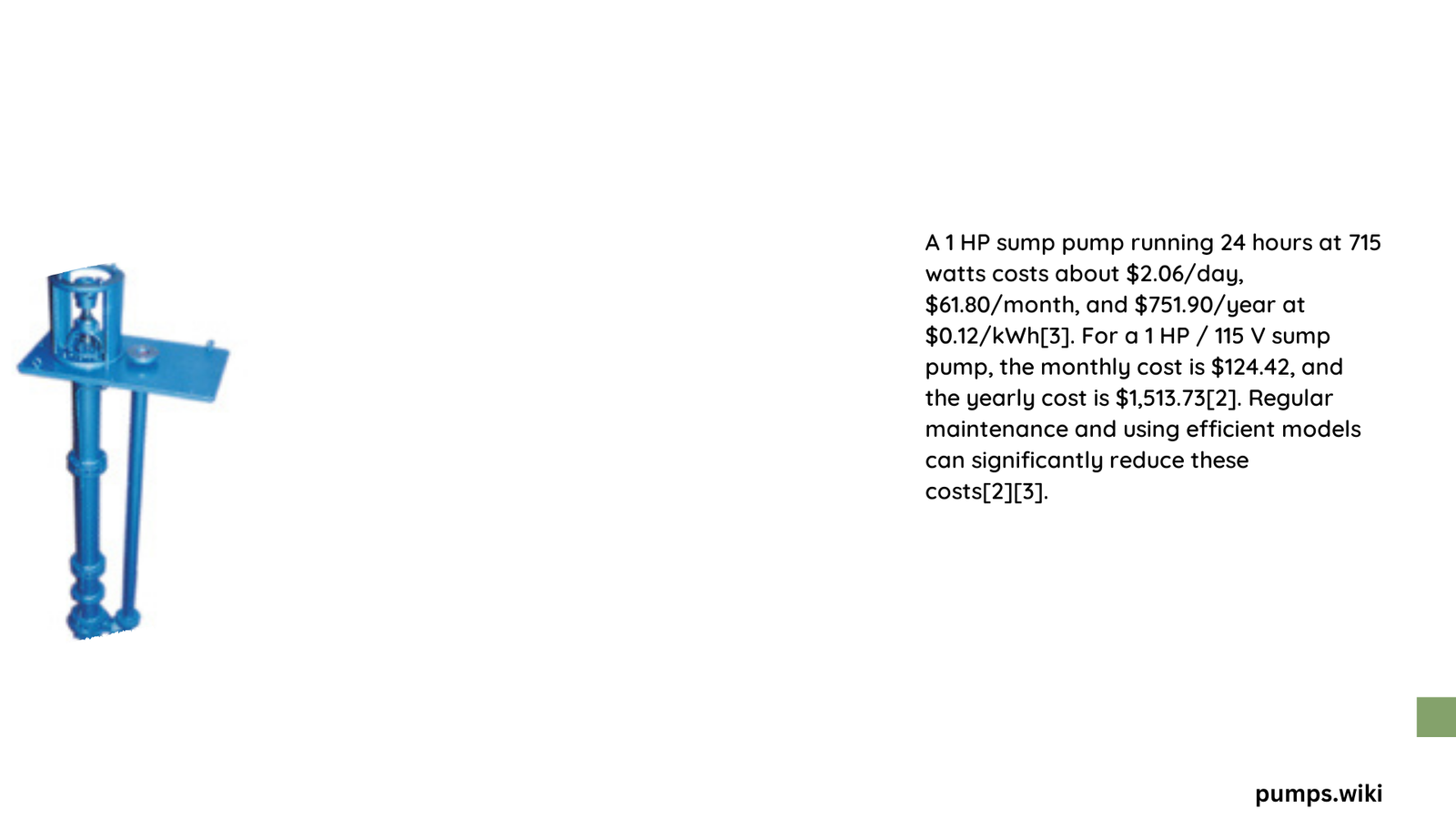Homeowners often overlook the hidden electricity expenses associated with sump pumps, which can silently drain your monthly budget. Understanding the intricate relationship between sump pump operation and electrical consumption is crucial for managing household expenses. This comprehensive guide will break down the complexities of sump pump electric bills, providing actionable insights to help you minimize energy costs while maintaining optimal water management.
What Determines Sump Pump Electricity Consumption?
Sump pump electricity consumption varies significantly based on several critical factors:
Horsepower and Wattage Impact
| Pump Type | Average Watts | Daily Cost | Monthly Cost | Yearly Cost |
|---|---|---|---|---|
| 1/2 HP | 1050 watts | $1.26 | $37.80 | $459.90 |
| 1 HP | 715-1440 watts | $2.06-$4.15 | $61.80-$124.42 | $751.90-$1,513.73 |
How Can You Calculate Sump Pump Electricity Expenses?
The fundamental formula for calculating sump pump electricity costs is:
Cost = (Watts × Hours Used ÷ 1000) × Price per kWh
Practical Calculation Example
Let’s break down a typical scenario for a 1 HP sump pump:
– Wattage: 1440 watts
– Daily Operation: 24 hours
– Electricity Rate: $0.12 per kWh
- Daily Energy Consumption: 1440 watts × 24 hours ÷ 1000 = 34.56 kWh
- Daily Cost: 34.56 kWh × $0.12 = $4.15
- Monthly Cost: $4.15 × 30 = $124.42
- Yearly Cost: $4.15 × 365 = $1,513.73
What Strategies Reduce Sump Pump Electric Bills?
Effective strategies to minimize electricity expenses include:
- High-Efficiency Pump Selection
- Choose pumps with advanced motor technologies
- Look for variable speed drive capabilities
-
Prioritize energy-efficient models
-
Maintenance Techniques
- Regular cleaning and debris removal
- Annual professional inspection
- Lubricate moving parts
-
Check electrical connections
-
Operational Optimization
- Install sump pump covers
- Use battery backup systems
- Consider variable speed pumps
- Monitor water table levels
What Factors Influence Sump Pump Energy Consumption?
Critical factors affecting electricity usage include:
1. Duty cycle and runtime
2. Water table fluctuations
3. Sump pit dimensions
4. Pump motor efficiency
5. Local groundwater conditions
How to Choose an Energy-Efficient Sump Pump?
When selecting a sump pump, consider:
– Precise horsepower requirements
– Motor efficiency ratings
– Manufacturer’s energy consumption specifications
– Long-term operational costs
– Warranty and reliability
Pro Tips for Reducing Sump Pump Electricity Expenses
- Invest in modern, energy-efficient models
- Implement regular maintenance schedules
- Use smart home technologies for monitoring
- Consider professional energy audits
- Compare different pump models’ efficiency ratings
Conclusion

Understanding and managing your sump pump’s electric bill requires a multifaceted approach. By implementing strategic selection, maintenance, and operational techniques, homeowners can significantly reduce electricity expenses while ensuring effective water management.
